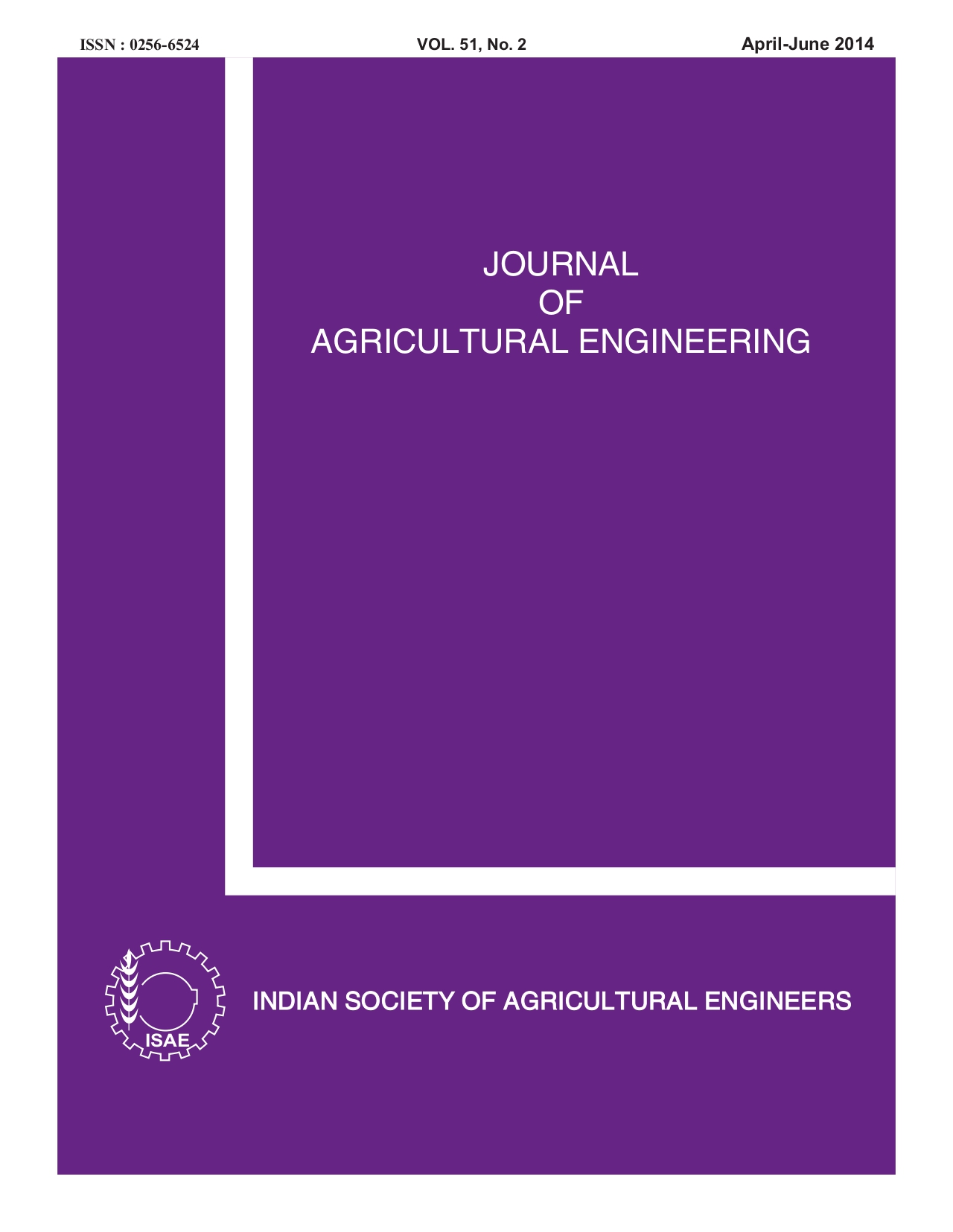Optimization of Microwave Assisted Process for Extraction of Celery Seed Essential Oil
DOI:
https://doi.org/10.52151/jae2014512.1546Keywords:
Celery seed, essential oil, microwave assisted extraction, hydro distillationAbstract
Microwave assisted extraction (MAE) method was developed for extraction of essential oil from celery seeds. A domestic microwave oven was modified and Clevenger apparatus attached to it to make it an extraction unit. Effect of various parameters such assoaking time, temperature and power density during MAE was studied.Amultivariate study based on a Box-Behnken design was used to evaluate the influence of three major variables (soaking time, temperature and power density) affecting the performance of MAE on celery seed. Oil yield, time of extraction and energy consumption (MJ.kg-1 oil) by MAE were determined and compared with those obtained by the traditional hydro-distillation (HD). It was found that microwave assisted process gave approximately same oil yield (1.90%) in less time ( 93.5 min) and with low energy consumption (58191.78 MJ.kg-1 oil). Results revealed that the selected parameters had significant effect on the responses.
References
AACC. 1983. Approved Methods of the American Association of Cereal Chemists (8th ed.). Salem, MA, Library of Congress.
Agrawal S; Sastry E V D; Sharma R K. 2001. Seed Spices - Production, Quality, Export. Pointer Publishers, Jaipur, 171-175.
Anon. 2002. The Complete Technology Book of Essential Oils. NIIR Board. Asia Pacific Business Press Inc., New Delhi, 540-541.
Bayramoglu B; Sahin S ; Sumnu G. 2008. Solvent-free microwave extraction of essential oil from oregano. J. Food Eng., 88, 535–540.
Bhatia S C. 2001. Perfumes, Soaps, Detergents and Cosmetics. CBS Publishers and Distributors, New Delhi, 90-91.
BIS. 1982. ISI Handbook of Food Analysis. (Part VII), New Delhi, Indian Standard Institution, 145–147.
Box G E; Behnken D W. 1960. Some new three level designs for the study of quantitative variables. Technol., 4, 455-475.
Chemat F; Lucchesi M E ; Smadja J ; Favretto L ; Colnaghi G ; Visinoni F. 2006. Microwave accelerated steam distillation of essential oil from lavender: A rapid, clean and environmentally friendly approach. Anal. Chem. Acta., 555, 157–160.
Cox G M; Cochran W G.1964. Experimental Designs. John Wiley and Sons Inc., New York, 335-375.
Farooqi A A;Sreeramu B S. 2001. Cultivation of Medicinal and Aromatic Plants. Universities Press, Hyderabad, 389-393.
Ferhat M A; Meklati B Y; Smadja J ; Chemat F. 2006. An improved microwave Clevenger apparatus for distillation of essential oils from orange peel. J. Chromat., 1112, 121–126.
Jiao J; Li Z; Gai Q Y; Li X J; Wei F Y; Fu Y J; Ma W. 2014. Microwave- assisted aqueous extraction of oil from pumpkin seeds and evaluation of its physicochemical properties, fatty acid composition and antioxidant activities. Food Chem., 147, 17-24.
Kaufmann B A; Christen P. 2002. Recent extraction techniques for natural products: microwave assisted extraction and pressurized solvent extraction. Phyto. Analy., 13,105-113.
Lee W C; Yusof S; Hamid N S; Baharin B S. 2006. Optimizing conditions for enzymatic clarification of banana juice using response surface methodology (RSM). J. Food Eng., 73(1), 55–63.
Lucchesi M E; Chemat F; Smadja J. 2004. Solventfree microwave extraction of essential oil from aromatic herbs: comparison with conventional hydro-distillation. J. Chromat., 1043, 323–327.
Lucchesi M E; Smadja J; Bradshaw S; Louw W; Chemat F. 2007. Solvent free microwave extraction of Elletaria cardamomum L.: A multivariate study of a new technique for the extraction of essential oil. J. Food Eng., 79(3), 1079-1086.
Montgomery D C. 2004. Design and Analysis of Experiments. New York, 289-290.
Presti M L;Ragusa S; Trozzi A; Dugo P; Visinoni F; Fazio A; Dugo G; Mondello L. 2005. A comparison between different techniques for the isolation of rosemary essential oil. J. Sep. Sci., 28, 273-280.
Singhal R S; Kulkarni P R; Rege D V. 1997. Handbook of Indicies of Food Quality and Authenticity. Woodhead Publishing Limited, Abington, 386-456.
Singhal V. 2003. Indian Agriculture. Indian Economic Data Research Centre, New Delhi. 635-637.
Stashenko E E; Jaramillo B E; Martinez J R. 2004. Analysis of volatile secondary metabolites from Colombian Xylopiaaromatica (Lamarck) by different extraction and headspace methods and gas chromatography. J. Chromat.,
, 105–113.
Wang Z; Ding L; Li T; Zhou X; Wang L; Zhang H; Liu L; Li Y; Liu Z; Wang H; Zeng H; He H. 2006. Improved solvent-free microwave extraction of essential oil from dried Cuminumcyminum L. and Zanthoxylumbungeanum
Maxim. J. Chromat., 1102, 11–17.
Qu X J; Fu Y J; Luo M; Zhao C J; Zu Y G; Li C Y; Wang W; Wei Z F. 2014.Acidic pH based microwave- assisted aqueous extraction of seed from yellow horn (Xanthoceras sorbifolia Bunge). Ind. Crops Prod., 43, 420-426.














